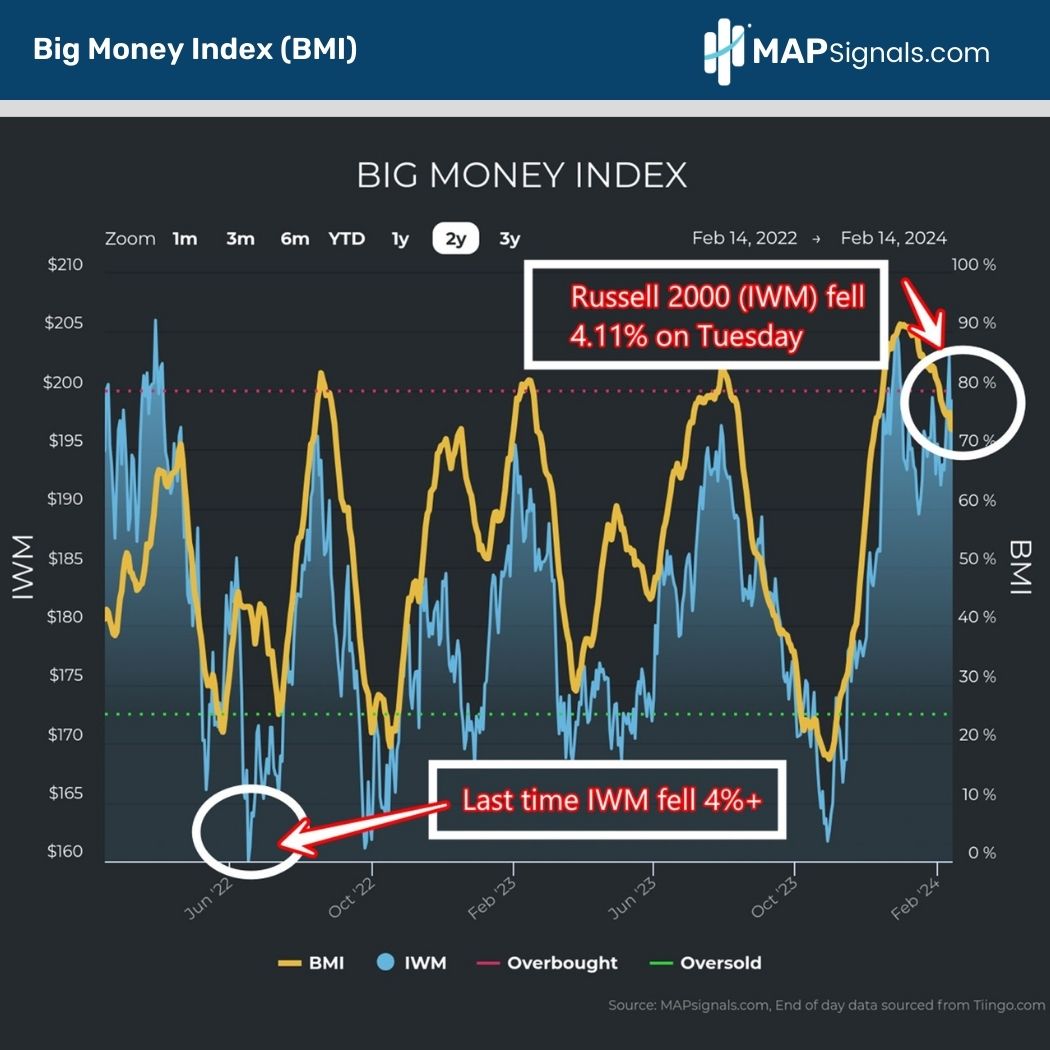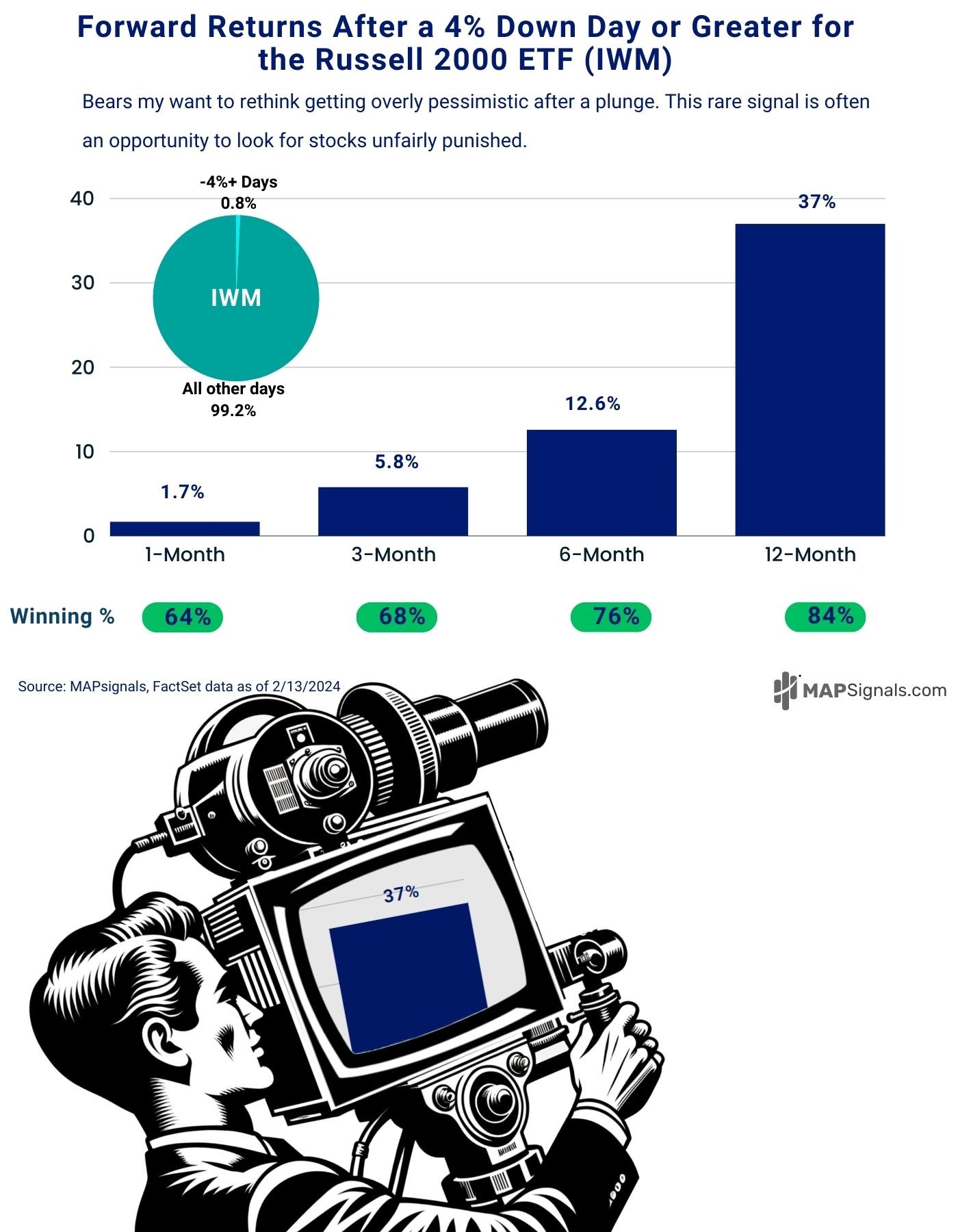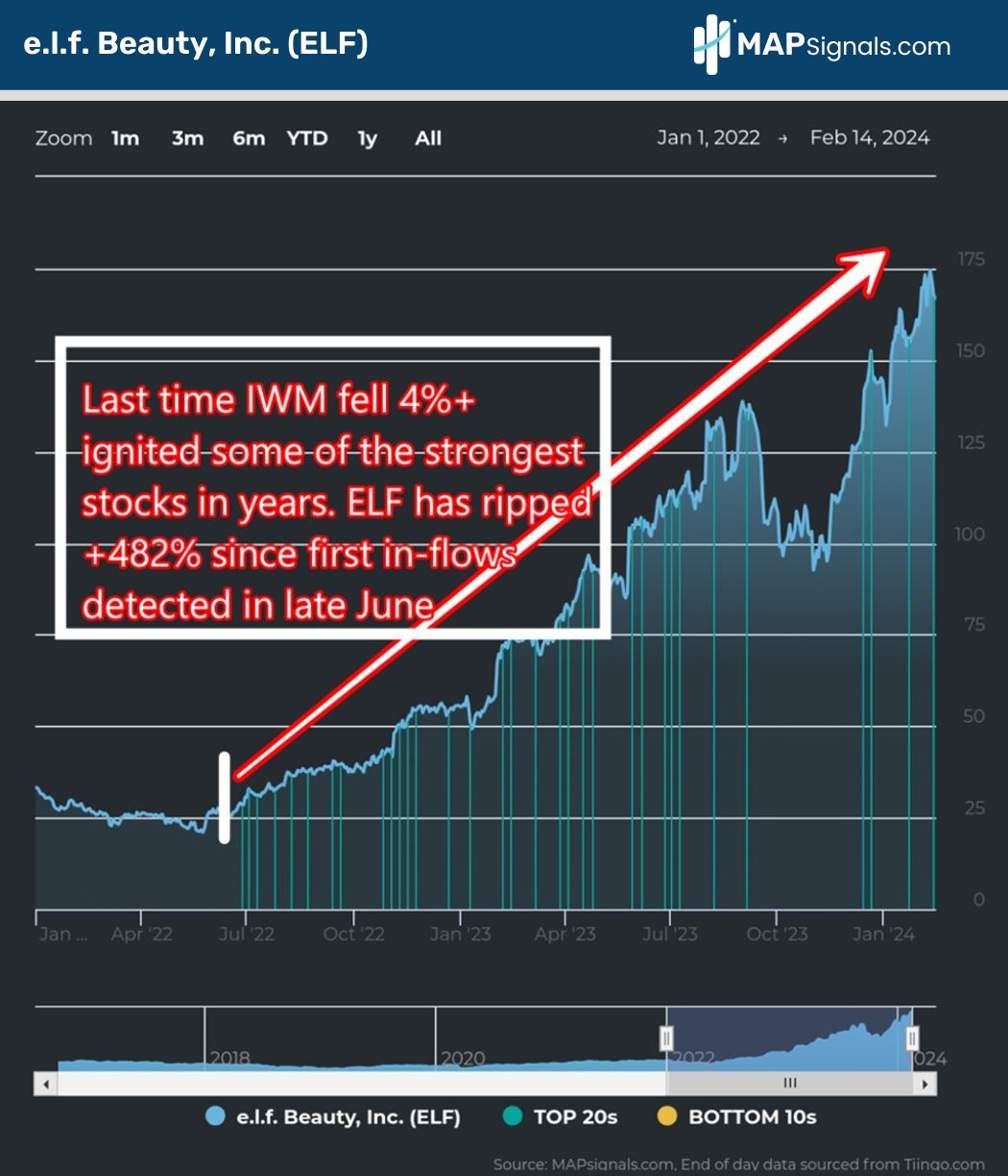
Small-Cap Meltdown Triggered a Rare 1% Signal
Some of the greatest buying opportunities arrive when stocks are in freefall.
The latest small-cap meltdown triggered a rare 1% signal that you need to see.
Here’s a fact: Estimates suggest that 80% of forest fires are caused by humans. What’s important is what happens after the flames burn out.
Nature heals. Out of the ashes springs new life.
Did you also know that 100% of stock market fires are caused by humans? It’s true. And the bigger message is how new leadership often emerges from the equity embers.
Tuesday’s hotter than expected Consumer Price Index (CPI) sent stock plunging. Small-caps in particular shed over 4%, akin to a wild brushfire.
Today we’re going to put that selloff into perspective and study what it can mean going forward. Not only that, we’ll also revisit a prior meltdown that ignited one of the most powerful stocks in recent memory.
But first, let’s size up the equity landscape…there’s plenty going on.
Falling Big Money Index Foreshadows Equity Weakness
Last week was pivotal in our data. We alerted you to the glitch signaling trouble under the market surface.
For a month now, we’ve notated how once the Big Money Index (BMI) falls out of overbought conditions, stocks are exposed to downside.
When there’s dry terrain, any bearish spark can erupt an equity wildfire.
Tuesday’s CPI print was the straw that finally broke the camel’s back. Just about all stocks suffered that day, but fears of higher-for-longer interest rates hit the Russell 2000 ETF (IWM) doubly hard.
The 4.11% plunge in IWM was the single worst performing day for the fund since mid-June 2022:

While the BMI has yet to make a floor, indicating we aren’t out of the woods yet, there’s a constructive message in the data.
There are a few takeaways from Tuesday’s equity wildfire:
- First, the BMI fell to the mid-70s, its lowest reading since early December
- Second, it was a 20% buy day, meaning 80% of our signals were sold indicating some capitulation
- Third, a 4%+ selloff in IWM is ultra-rare.
The last point is mission critical. Let’s unpack that.
Small-Cap Meltdown Triggered a Rare 1% Signal
Most people don’t get excited about a stock market plunge. I don’t blame them.
The mainstream media loves to fan the fear-driven flames whenever stocks are in freefall.
The better plan of action is to study history and put these equity forest fires into context.
Since 2000, we’ve witnessed 50 discrete days when IWM fell 4% or more. This is ultra-rare and occurs less than 1% of the time.
More importantly, after a 4%+ pullback in the Russell 2000 ETF (IWM), small-caps surge in awe-inspiring fashion:
- 6-months later, IWM jumps +12.6%
- 12-months after, IWM pumps a mind-numbing +37%
As usual, our friend Marty McMap is zeroing in on the JUICE:

That folks, tells you all you need to know. These rare forced-selling episodes bring about new life once the dust settles.
Here’s another fact – did you know that there’s a rare flower that only blooms after forest fires? The beautiful purple Baker’s globe mallow, a hollyhock, emerges only from the ashy forest floor.
Turns out, some of the most beautiful, rare small-cap stocks spring to life after equities are set ablaze, too.
Prior to Tuesday, the last time we saw a 4%+ plunge in IWM was June 16th, 2022. If we rewind the tape, that’s also when the BMI was nearing oversold.
Our bullish message couldn’t have been louder. I said to be on the lookout for new leadership…
And boy did it come. After that equity brushfire, new under-the-radar companies began to show sproutlings of life out of the rubble.
One great example is e.l.f. Beauty (ELF). This cosmetic company sports outstanding fundamentals like:
- 3-year sales growth of +27.8%
- 3-year EPS growth of +115.7%
- 1-year estimated EPS growth of +19.3%
In our portal, we have a proprietary signal that showcases top fundamentally ranked stocks getting quietly accumulated.
After IWM’s meltdown in June of 2022, it didn’t take long for institutional investors to kick-start ELF’s nearly 500% rally.
Below shows a white line when IWM last saw a 4%+ pullback in June of 2022. The soon-after blue bars are when ELF made our rare Top 20 report.
This signal fires when institutional buying occurs on the highest quality stocks:

This is MAPsignals version of the rare hollyhock. Those 33 signals are what I call the stairway to heaven, plotted by institutional footprints!
Only the highest quality outlier stocks have charts like this.
And it’s why the last time the BMI went oversold in October, one of the small-caps we recommended was ELF. Since then, the stock has gained +63%.
If you’re not using big market declines to your advantage, you’re making a long-term mistake.
Forest fires eventually burn out.
Life emerges.
Equity fires offer you an opportunity to hunt for outstanding companies getting unfairly punished. Institutions sift through the rubble and plow into names, in search of tomorrow’s leading stocks.
Using a MAP helps you locate them.
While the all-clear signal isn’t here for the market, don’t lose sight of the rare 4% down days in IWM.
There’s opportunity in the ashes.
Let’s wrap up.
Here’s the bottom line: A falling BMI prefaced one of the largest selloffs in small-caps in over a year. A 4%+ decline in the Russell 2000 ETF (IWM) should be embraced.
This small-cap meltdown triggered a rare 1% signal that historically sees IWM up 37% a year later.
Even more exciting is the fact that the last time we saw a similar pullback, some of the biggest stock leaders of today began their march higher.
If you’re a Registered Investment Advisor (RIA) or are serious about investing, get started with a MAP PRO subscription.
You’ll get access to our automated algos, and our prized Top 20 report each week.
Chances are the hollyhocks are getting watered.
